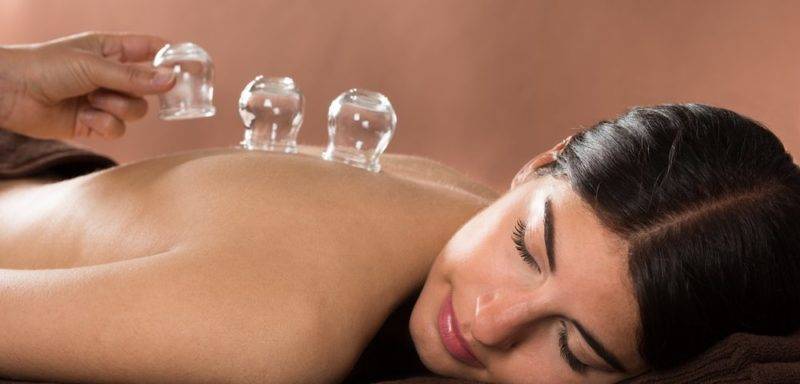By Catherine Grant, RMT
What to Expect
When incorporating cupping massage into treatment I use plastic cups with a pump to draw air out and create the vacuum. Before the cups are applied I typically warm up the tissue using massage gel or lotion and General Swedish Massage techniques, however, the cups can be applied directly onto the skin without a lubricant. Depending on our goals the cups may remain in one place while I treat the surrounding area (stationary cupping), or I may glide the cups around the area (cupping massage). Once the cups are applied they can be left on for various amounts of time depending on client goals, comfort, and tissue health, but 15 minutes is generally how long I apply them. It is quite common for the client to experience a “tightness” or “pulling” of the tissue upward as well as a strong sense of warmth in the areas treated due to the increased blood flow and separated layers of tissue. The use of cupping massage should be relaxing and not painful so if you do feel discomfort it is important to let me know and we can adjust the suction or discontinue the use of the cups.
If it is your first time trying cupping massage I will typically only use a few cups so that we can gauge you’re reaction and determine if you like the treatment. If you find it to be beneficial more cups may be applied in subsequent treatments.

After Cupping Massage
You may, or may not, experience the following after a session of cupping massage:
- Fatigue
- A sensation of heat in the area. The area of skin treated may be slightly raised, especially if stationary cupping is implemented
- Skin discoloration – this can range from simple red rings that disappear relatively quickly, to ecchymosis or “bruising” that may last for a week or more depending on the client. Since the “bruise” is a result of a vacuum and not compression injury, it should not hurt to touch
Drinking water after a cupping massage treatment is recommended
Benefits of Cupping Massage
Cupping can improve tissue health in areas including:
Fascia:
- Increasing range of motion in cases where the fascia is restricting movement
Muscles:
- Bringing fresh blood into the area helps promote muscle healing
- Decreasing muscle tone by activating Golgi tendon organ receptors
Old Adhesions and Scars:
- Separation of “stuck” tissue layers draws fluid in and increases the mobility of healed scars
- In areas such as the IT Band cupping can aid in the relief of knee pain
Spine and Ribs:
- Cupping is a great alternative for creating separation of tissues and decompression of joints in an area where the downward pressure of General Swedish techniques cannot be used
Chronic inflammation:
- The increase in circulation helps remove the stagnation present in the tissue
Precautions with Cupping
Cupping massage is not used in cases where clients are experiencing:
- High fever
- Acute inflammation, swelling, or edema
- Cramps/spasms
- Open or recently healing wounds
- Skin rashes
- Issues with bleeding, or blood clotting
- Over a hernia
Caution is used in cases such as:
- Pregnancy
- The use of blood thinning medications, or pain medications
- People with less skin elasticity (elderly)

Feel the Benefits for Yourself!
You can have cupping as a standalone treatment, or in combination with massage and other treatment techniques that I offer, such as Fascial Stretch Therapy. We’ll take a few minutes to discuss your concerns and decide what’s right for you. You can easily book online at www.activeapproach.ca or give us a call at (902) 429-2225, and one of our staff members would be happy to find a suitable appointment time for your schedule! I look forward to helping you!

